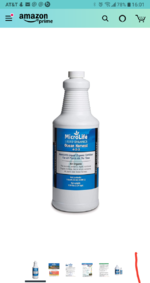Leo in N E Illinois
The Professor
- Messages
- 11,338
- Reaction score
- 23,278
- USDA Zone
- 5b
The traditional wisdom suggests that flowering trees will yield optimal blooms when fertilized with a low nitrogen fertilizer towards the end of the summer, through fall. The explanation provided is that higher nitrogen will result in more vegetative growth and less flower budding. I would have chalked this up as an old wive's tale, but I've heard it repeated by more than a few respected bonsai growers. On the other side, I'm hearing more and more people say that next year's buds are being grown now and high nitrogen will help these very buds develop. Not quite sure what to think.
Right now I'm using Peters 20-20-20 and would prefer not to buy a seperate "bloom promoter" fertilizer for my one Chaenomeles but if that's what would be best I'll do it. FWIW the Chaenomeles is developed, I'm just looking for maximum fruits, flowers, and ramification--in that order
This is BULLSHIT and it is BAD for YOU - a quote from George Carlin, which I always find amusing.
First let's clear some things up. What is a balanced fertilizer? Take a look at your multivitamin for humans. Are all the vitamins present in the exact same quantity? Of course not. It is well known that if a human consumes an equal amount of Vitamin D, as Vitamin C, and was taking the near 1000mg of C recommended, the 1000mg of D would over the course of 2 months accumulate and cause severe health issues for the average person, and may cause death in people with risk factors. A multivitamin with a 10-10-10 ratio of the nutrients is NOT BALANCED for humans. What does this have to do with plants? Plants, and I mean pretty much ALL plants, including bonsai and orchids and seaweed and your lawn out front, all plants use nutrients in the ratio roughly 12-0.8-4 with Calcium at 13, Magnesium at 4, Sulfur at 2 and then the long list of Micronutrients. Reference - "What do Orchids Eat" by R. Lockwood 2013, this article is about orchids, but the references cited lead to the all plants statement.
So based on the article cited, and the many references cited in that article, a 10-10-10 or a 20-20-20 fertilizer is NOT BALANCED. Indeed, a 12-1-4 fertilizer is what is truly balanced. This 12-1-4 not considered high Nitrogen, this is actually a "just right" for Nitrogen. High nitrogen fertilizer would be something like a 30-1-30, which, quite honestly, we just don't see on vendors shelves. So the reality is, you have never seen an off the shelf fertilizer that is truly a high nitrogen fertilizer. Except for the single component nutrients such as Calcium Nitrate sold in the higher end hydroponics shops at huge mark up for the marijuana market. So a Balanced fertilizer is roughly 12-1-4, this is key for understanding fertilizer.
That is item one. I'll respond to later posts below.
A short list of fertilizer references is available on my website under the heading, "Fertilizer Information".
leosorchids.com
www.leosorchids.com


